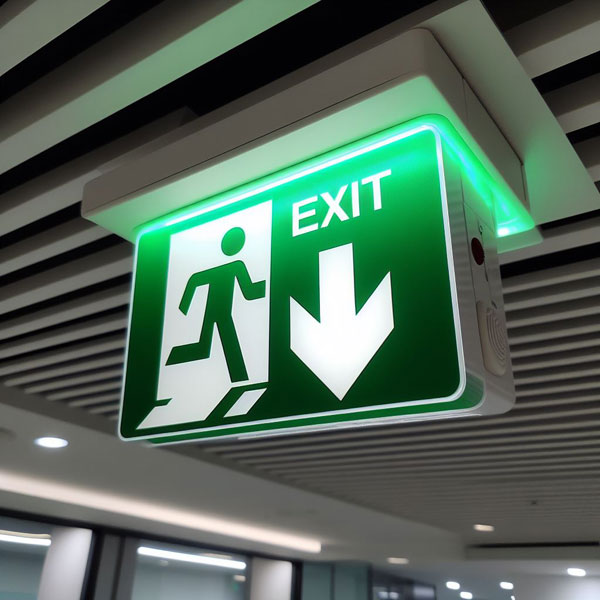Why is emergency lighting needed?

Emergency lighting is crucial for ensuring the safety of individuals in buildings during unforeseen events. The following are key reasons highlighting the necessity of emergency lighting:
1. Illuminating Escape Routes: In the face of a fire or any emergency, regular lighting may be unavailable, hindering people's ability to navigate through a building. Emergency lighting is specifically designed to illuminate escape routes, guiding individuals safely to exits and predetermined safe areas.
2. Ensuring Continuity of Operations: Certain critical operations, such as those in hospitals, data centers, and manufacturing plants, demand a continuous power supply to prevent harm to patients or the loss of crucial data. Emergency lighting guarantees the uninterrupted functioning of these operations by providing a backup power supply in the event of a power outage.
3. Regulatory Compliance: Building codes and safety regulations frequently mandate the installation of emergency lighting to ensure adherence to established safety standards. Compliance with these regulations is essential for safeguarding occupants during emergencies.
4. Minimizing Panic and Confusion: Emergency situations can induce panic and confusion among individuals. Emergency lighting plays a pivotal role in mitigating these challenges by offering clear illumination and guidance during such critical moments, ultimately reducing the risk of injuries and loss of life.
5. Enhancing Evacuation Efficiency: Emergency lighting enhances the efficiency of evacuation procedures by providing well-lit pathways, aiding occupants in promptly and safely leaving the premises. This is particularly vital in large buildings or spaces where rapid evacuation is imperative.
6. Addressing Power Outages: Emergency lighting acts as a reliable solution to address unexpected power outages, ensuring that essential areas remain adequately lit, and people can navigate through the building without hindrance.
7. Facilitating Search and Rescue Operations: Emergency lighting aids search and rescue teams by providing visibility in critical areas, allowing them to locate and assist individuals in need during emergency situations.
8. Safeguarding Vulnerable Environments: Environments housing sensitive equipment, critical infrastructure, or vulnerable populations, such as the elderly or young children, greatly benefit from emergency lighting to maintain a secure and well-lit environment during emergencies.
9. Supporting Emergency Response Teams: Emergency lighting contributes to the effectiveness of emergency response teams by ensuring that key areas are illuminated, facilitating their ability to carry out rescue and response operations swiftly and with precision.
10. Meeting Industry-Specific Requirements: Certain industries and facilities have unique requirements for emergency lighting based on the nature of their operations. Adhering to industry-specific standards ensures that emergency lighting is tailored to meet the distinct needs of these environments.